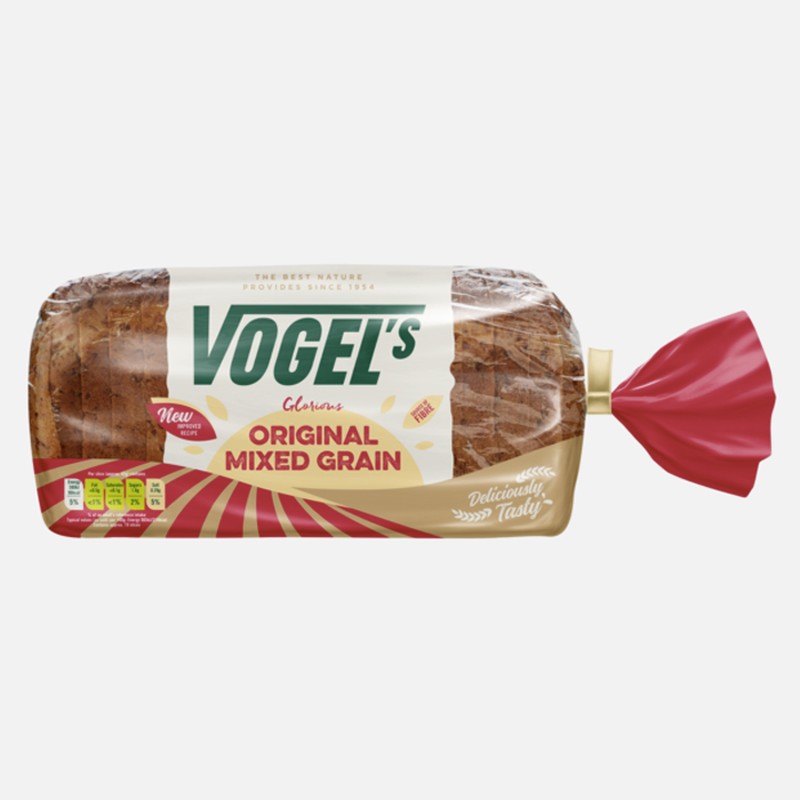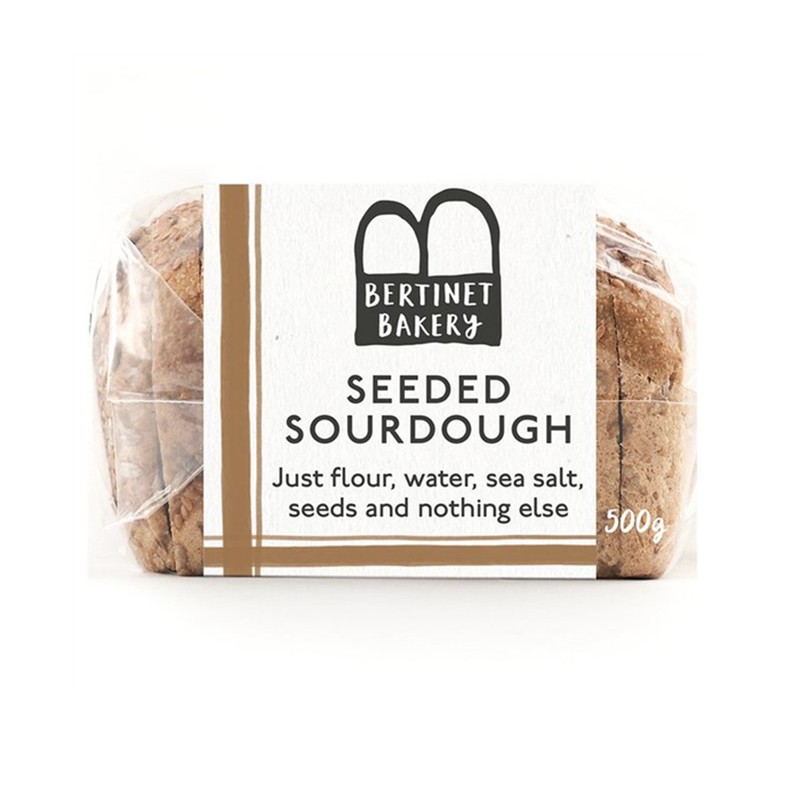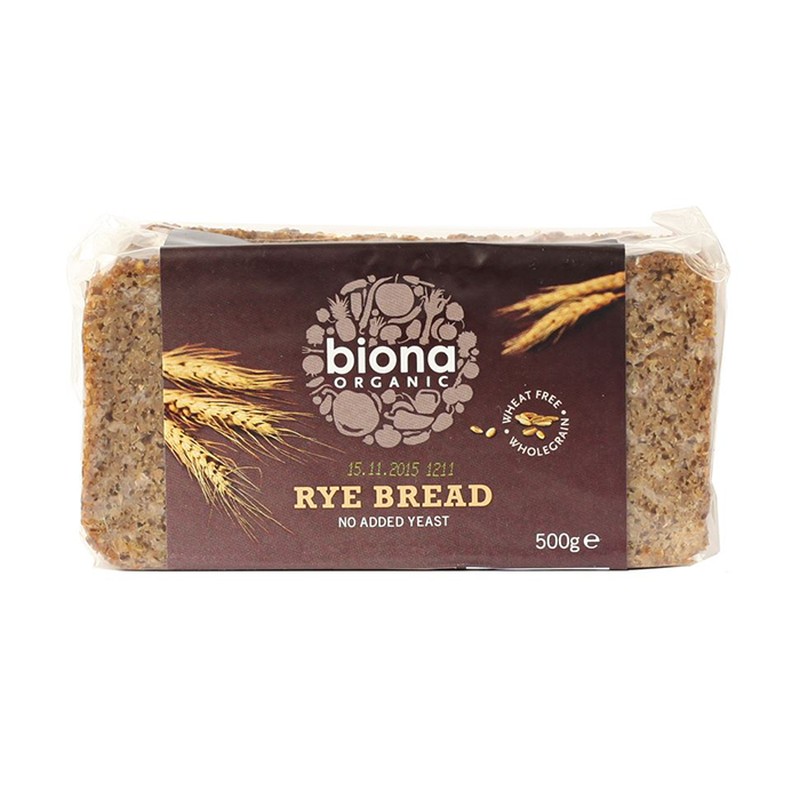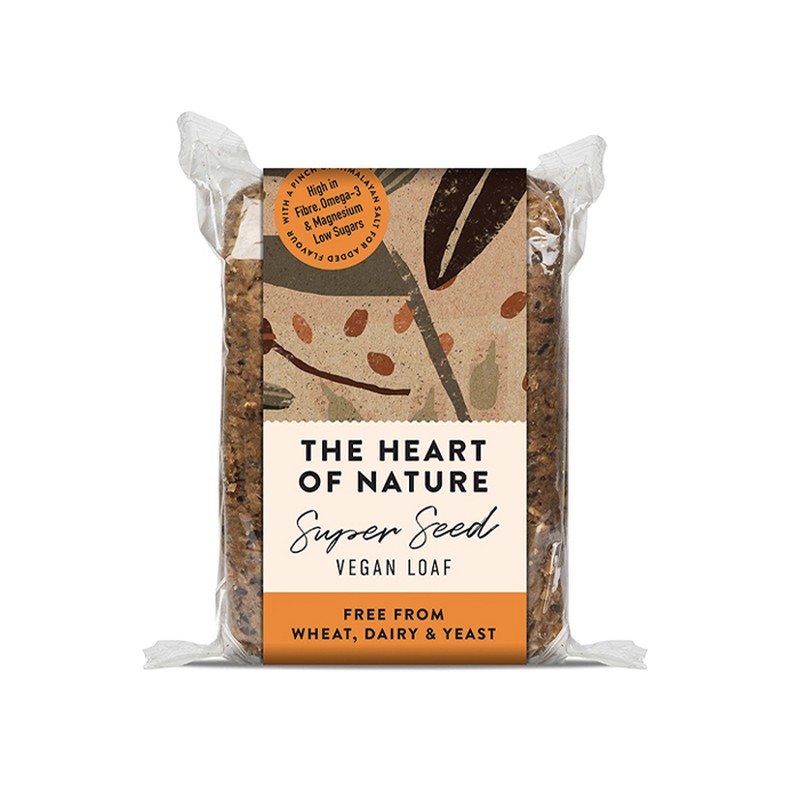
What To Think About When Buying Bread
Don’t Worry About The Calorie Content
“When you’re looking at the label on a loaf of bread in the supermarket, it can be easy to get overwhelmed with the calorie, carb, fibre and protein content, but my advice would be to forget the calories. Calories aren’t of great benefit when evaluating bread, as often the more nutritious breads are naturally higher in calories due to the added nuts and seeds. Think about it – the nutrition in a slice of bread with 100 calories versus that in an avocado portion of 100 calories is very different. Choose your bread for the fibre, complex carbohydrates and flavour, not the calories. For example, The Heart of Nature’s Pure Grain Bread is naturally higher in calories but is wheat, dairy and yeast free. It contains two types of linseeds for an omega boost, too, and has a low-GI index, making it a top choice for those looking to balance their blood sugar.” – Clarissa Lenherr, nutritionist
Instead, Check The Fibre Content
“Fibre is a key nutrient for everything from healthy gut function to hormone balance and nurturing a healthy microbiota, so if you’ve picked up two loaves choose the one containing more fibre to help reach your recommended daily intake of 30g per day. As a general rule, wholegrain bread varieties contain more fibre, and also contain beneficial nutrients such as B vitamins, iron, zinc, copper, magnesium and manganese. In fact, bread is one of the primary ways we can increase our fibre intake – just be sure to choose a brown, wholegrain variety.” – Aliza Marogy, nutritionist and founder of clinical supplement brand Inessa
Consider A Seeded Variety
“Seeds are a great source of healthy fats as well as a range of essential minerals, so eating seeded bread is the same as eating some bread alongside a small number of seeds. Seeded breads will be marginally higher in calories owed to the added protein and fats from the seeds but will add to the nutrient quality and possibly satiety factor of the bread. Again, it’s not a worse, better, best situation when it comes to bread selection, rather it’s about considering your diet as a whole and what’s lacking versus what’s plentiful. If you already consume nuts and seeds elsewhere in your diet, you may be less inclined to need them in your bread too. If you tend not to eat nuts or seeds and you’re looking to increase healthy fat intake while maximising the quality of your sandwich, then seeded bread may be a good option for you.” – Dan Price, head of nutrition at SIX3NINE
…But Ditch The Seeds If You Have Tummy Troubles
“The more we vary our intake of wholefoods, the better, so in general, seeded wholegrain breads are the most nutritious option. However, if you have IBS or IBD, be careful, as some seeds can be a trigger. If you can digest seeds, remember to look for a loaf that contains a variety, as each seed type has slightly different nutrients. Multiseed breads will often contain a mix, including pumpkin, flax, poppy, chia and sunflower seeds, so look out for these.” – Aliza
Try A Protein-Rich Loaf If You’re Plant-Based
“Bread is not typically associated with being high protein, although if you are following a vegetarian or vegan diet, it can be a good way to increase your protein intake. For example, Hovis Seed Sensations Seven Seeds provides 4.9g of protein per slice for 131kcal, while Hovis Medium White loaf provides 3.5g of protein per slice at 93kcal. A 20g serving of protein at a main meal is a good minimum target to aim for. This means two slices of seeded bread can get you halfway there before you’ve even added your filling. There are some very high protein breads available such as Dr. Zak’s High Protein Bread that comes in at an impressive 15g of protein per slice at just 150kcal. This is achieved by using a blend of wholemeal wheat, linseed and sunflower seed flour.” – Dan
Don’t Get Hung Up On The Carbs
“Remember that bread is naturally a high-carb food, so when looking at the label, try not to worry too much about that figure. Instead, check the amount of salt per 100g, as bread is one of the places it can hide, especially if you’re buying a packaged variety.” – Aliza
Head To The Bakery
“Freshly baked bread should always be your first choice, as it contains fewer additives and preservatives. Pre-packaged breads have the benefit of being designed to sit on the shelf longer but will also include additives and preservatives as a result. As a rule of thumb, long ingredient lists containing ingredients that are unrecognisable should be eschewed in favour of breads with short lists containing foods that will be familiar, such as ‘wheat’ and ‘yeast’. Whether selecting fresh or pre-packaged, choose bread made from an unrefined, whole grain flour, and that lists this as the first ingredient. Be aware that even if your loaf is labelled multi-grain, brown or granary, this does not necessarily mean that the bread is made from 100% whole grain flour – the only way to know is by checking the ingredients list. A good ‘all-rounder’ is fresh, traditional sourdough bread made of spelt, whole wheat and rye flour, or a combination of these.” – Aliza
Be Wary Of Sourdough
“There is a misconception that all sourdough bread is superior. Unless you’re making your own or buying from an artisan baker, chances are you aren’t actually eating proper sourdough. The term ‘sourdough’ isn’t protected in the UK, meaning manufacturers can sell any bread as sourdough despite it not being made using the slow fermentation method responsible for sourdough’s health benefits. To speed up manufacturing time and mimic its characteristic flavour, some breads include ingredients like baker’s yeast, baking powder, yoghurt or vinegar. To make sure you’re buying true sourdough, ask your bakery about their processes and when purchasing from a supermarket, check labels and avoid bread containing the aforementioned ingredients.” – Aliza
…But Choose Wisely When You’re In Gail’s
“If you’re heading somewhere like Gail’s, where they offer white and brown sourdough, always try to choose the darker variety if possible. While traditional white sourdough is fine, be aware it won’t offer the same amounts of vitamins, minerals and fibre as the brown version will. If you love it, enjoy it occasionally, but know brown traditional sourdough is a healthier choice.” – Aliza
Gluten-Free Bread Isn’t Always The Healthier Option
“Gluten-free bread is often marketed as a healthier choice, but unless you have a medical condition which means that you have to avoid gluten, this is not the case. In place of nutritious whole wheat and rye, for example, commercial gluten-free breads tend to be made from a blend of refined tapioca, potato and rice starches, rice flour, maize flour, and cornflour, which are low in nutrients. Anyone who does not need to eat gluten-free bread for health reasons should stick to genuinely healthier alternatives. If you do need to avoid gluten for medical reasons, try to find a multi-seed gluten-free bread, and boost the nutrient profile of your meal by having it with a nutritious homemade soup or stew.” – Aliza
White Bread Isn’t The Devil
“Sliced, white bread is not bad for you, despite what the headlines say. It’s actually a source of carbohydrates, calcium, magnesium and iron, and provides around 90-100 calories per slice. It can absolutely be included as part of a healthy diet. However, white bread contains less fibre compared to wholegrain bread, and less vitamins, minerals and fats when compared to seeded loaves. All of these things add to the quality of your diet overall and the added fibre can help keep you fuller for longer. It is worth mentioning however that if you’re meeting all your nutritional requirements elsewhere within a calorie appropriate diet then including white bread within this is a fine choice.” – Dan
Finally, Think About Your Toppings
“Bread gets a bad rap for being a poor nutritional option but paired with the right foods can make for a nutritious meal. Toppings rich in healthy fats, fibre and protein are the perfect partner to carbohydrate-rich bread. Avocado is a great choice at any time of day, and is rich in good fats, fibre, magnesium, potassium, folate, plant sterols, choline, plus vitamins A, E, K, C, and many more. Hummus is rich in calcium, magnesium, B-vitamins, and healthy fats, as well as many minerals, including iron, manganese and zinc. For those who aren’t vegan, eggs are a nutrition powerhouse, packed with protein, B-vitamins, selenium, folate, iodine, choline and vitamin D. For maximum health impact keep the yolks runny to preserve more of the nutrients, some of which can be affected by over-cooking. Nut butters are a quick and easy option, similarly containing protein, fibre, good fats, vitamins and minerals. Lastly, seeds and sprouts, such as alfalfa, sprinkled as a garnish on top of your toast, will boost the nutritional value of your meal.” – Aliza
Here, nutritionist Clarissa Lenherr shares her picks…

Vogel’s Original Mixed Grain Bread, £1.55
“This is packed with high fibre grains such as kibbled rye and kibbled wheat. However, this loaf isn’t suitable for vegans or those avoiding lactose as it contains whey milk powder.”
Available at Waitrose.com

Burgen Soya and Linseed, £1.35
“This loaf is high in fibre, packing 4.3g per slice, which will keep you full and provide a slow release of energy. Plus, two slices provide more than 30% of your recommended intake of calcium and 120% of the recommended intake of omega 3.”
Available at Sainsburys.co.uk

Bertinet Bakery Seeded Sourdough, £2.25
“This is a very simple loaf, the way bread should be. It contains no added sugar and has some seeds thrown in for crunch and nutrition.”
Available at Waitrose.com

Biona Rye Bread, £2.09
“This is one of my favourite healthy breads. It contains only four natural ingredients and is packed with fibre – 10g per 100g as opposed to many others that sit around 6g per 100g.”
Available at RealFoods.co.uk

The Heart of Nature Pure Grain Bread, £2.99
“This is a great bread for those avoiding certain food groups as it’s free from what, dairy and yeast and is suitable for vegans. It also has a low-GI index.”
Available at Waitrose.com
For more information visit SIX3NINE.com, ClarissaLenherr.com and InessaWellness.com
DISCLAIMER: Features published by SheerLuxe are not intended to treat, diagnose, cure or prevent any disease. Always seek the advice of your GP or another qualified healthcare provider for any questions you have regarding a medical condition, and before undertaking any diet, exercise or other health-related programme.
DISCLAIMER: We endeavour to always credit the correct original source of every image we use. If you think a credit may be incorrect, please contact us at info@sheerluxe.com.

